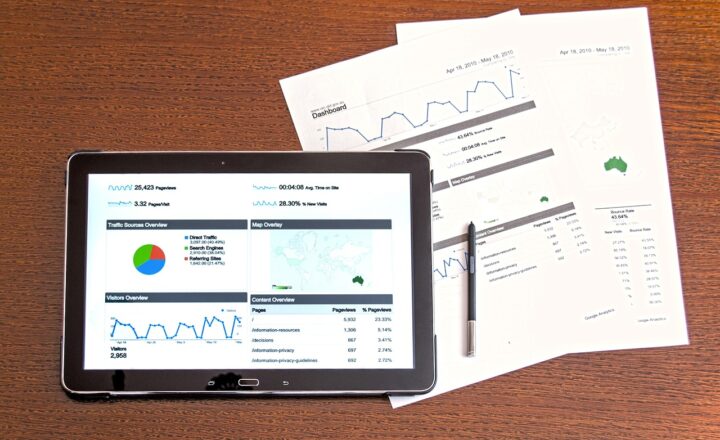How iOS and Android Handle Privacy Updates: Which Is Better for You?
November 12, 2024

In today’s digital age, privacy is more crucial than ever. With both iOS and Android vying for dominance in the smartphone market, their approaches to privacy updates have become a focal point for users. This article will explore how each operating system handles privacy updates, which features they offer, and ultimately help you determine which platform may be better suited for your privacy needs.
1. Understanding Privacy in the Mobile Ecosystem
Privacy refers to the rights and expectations that individuals have regarding the collection, access, and sharing of their personal information. In mobile devices, privacy encompasses anything from how apps handle data to how operating systems provide updates. In recent years, the conversation around mobile privacy has intensified, and both Apple and Google have responded with evolving features and regulations that govern user data.
The importance of mobile privacy cannot be understated:
- User Trust: Privacy is paramount for user trust in tech companies, especially in the aftermath of high-profile data breaches and scandals.
- Compliance with Laws: With stringent regulations like GDPR and CCPA, operating systems must ensure compliance to avoid legal repercussions.
- Preventing Data Misuse: Robust privacy features help protect users against unauthorized data collection and misuse, offering users greater control over their information.
Understanding how iOS and Android address these privacy concerns is essential as we delve deeper into their specific approaches.
2. iOS: Apple’s Approach to Privacy Updates
Apple has long positioned itself as a privacy-centric organization. With every iOS update, Apple reinforces its commitment to user privacy through a series of advanced privacy features.
Key Privacy Features in iOS
– Transparency Tracking: The introduction of App Tracking Transparency (ATT) requires apps to ask users for permission before tracking their activity across other companies’ apps and websites. This feature gives users the power to opt out of being tracked.
– Privacy Labels: Apple introduced privacy nutrition labels on its App Store, informing users about data collection practices before apps are downloaded. This allows users to make more informed decisions about which apps to install.
– Privacy Reports: The latest versions of iOS come with privacy reports that show users how apps are using their data over time. This transparency encourages developers to adhere to better privacy practices.
– Mail Privacy Protection: This feature hides users’ IP addresses and prevents senders from seeing when emails are opened, thus increasing the confidentiality of email communications.
Apple makes privacy a fundamental part of iOS updates, providing users with tools that empower them to control their data. The seamless integration of these features into iOS also means that updates reach users quickly and uniformly, reducing the potential for fragmented user experiences across various devices.
3. Android: Google’s Approach to Privacy Updates
While Google has been perceived as less privacy-focused, recent Android updates show significant strides toward enhancing user privacy. However, the open-source nature of Android can lead to variation in how different manufacturers implement these updates.
Key Privacy Features in Android
– Privacy Dashboard: Introduced in Android 12, this feature provides users with a detailed overview of their data access by apps, including how often apps have accessed their location, camera, and microphone.
– Permission Management: Android allows users to control app permissions more granularly, letting users grant temporary access to sensitive data (like location sharing) rather than granting blanket permissions throughout app usage.
– Scoped Storage: This feature restricts apps’ ability to access files outside their designated storage area. It minimizes the risk of apps interfering with each other and accessing unnecessary user data.
– Frequent Updates: Google often rolls out updates to its operating system, bringing new features that strengthen privacy. However, inconsistent timelines for updates across different manufacturers can dilute these advancements.
Though Android has made significant improvements in privacy protection, its reputation still lingers due to its extensive data collection practices. The primary challenge lies in the fragmented nature of the Android ecosystem, where updates do not uniformly reach all devices at the same time, posing potential risks for users not on the latest version.
4. Comparing Privacy Updates: iOS vs Android
To make an informed decision about which operating system might be better for your privacy, let’s compare their approaches based on a few criteria.
Update Frequency and Consistency:
– iOS: Apple provides consistent updates directly to all supported devices. Users generally receive privacy updates as soon as they’re released, regardless of their device model.
– Android: While Google pushes regular updates, the implementation depends on the device manufacturer. Hence, many users do not receive timely updates, which can leave their devices exposed to vulnerabilities.
User Control over Data:
– iOS: Apple has provided extensive tools, such as privacy labels and tracking transparency, allowing users to customize their privacy settings easily.
– Android: Google offers granular permission controls, but the implementation can vary, making it less uniform across devices.
Transparency and Communication:
– iOS: Apple’s clear communication regarding privacy practices and transparency labels empower users to make informed decisions.
– Android: Google has improved with the privacy dashboard but still has work to do to ensure all users understand how their data is used.
5. Making Your Choice: Which Is Better for You?
Ultimately, the choice between iOS and Android comes down to personal preference, priorities, and how you utilize your smartphone. If privacy is at the forefront of your decision-making, here are some considerations:
– Choose iOS if: You prioritize consistent updates and a firm commitment to privacy features. Apple’s ecosystem integrates privacy deeply into its operations, making it a choice for users who value data autonomy.
– Choose Android if: You prefer more flexibility and control over your device and are comfortable navigating privacy settings. Certain Android devices offer robust privacy features, but ensuring you’re on a device with timely updates is crucial.
Whichever platform you choose, being informed about your privacy settings and regularly reviewing them is vital to safeguarding your data in today’s digital landscape.
Conclusion
As the demand for privacy continues to grow, both iOS and Android have made strides in enhancing their platforms. While Apple emphasizes a user-first approach with clear privacy regulations, Google works to improve its privacy aspects within the Android ecosystem. Ultimately, understanding how they handle privacy updates can lead you to choose the platform that aligns best with your values and needs in terms of privacy. Educating yourself on how to manage your privacy settings will empower you to navigate the increasingly complex digital world with confidence.







